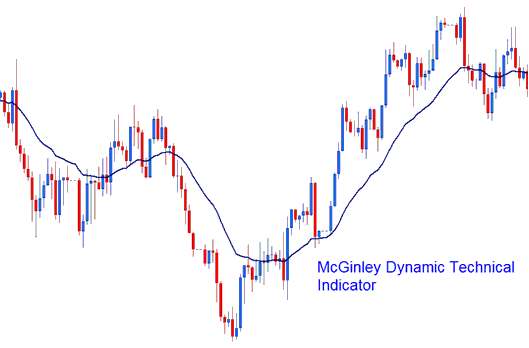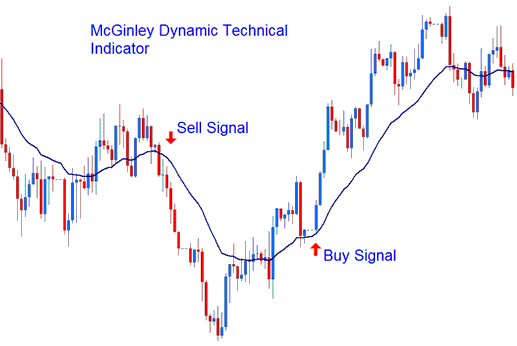McGinley Dynamic Analysis and McGinley Dynamic Signals
Created and Developed by John McGinley
McGinley Dynamic aims to overcome the lag of the traditional simple & exponential MAs, the trading indicator automatically adjusting itself compared to the speed of the market. Thus its name, dynamic.
The indicator follows price movements closely in both a fast and a slow moving market.

Technical Analysis and How to Generate Trading Signals
This technical indicator is better at avoiding whipsaws compared and analyzed to the initial MA.
Calculated using the formula:
Dynamic = D1 + (Price - D1) / (N * (Price/D1)^4)
D1 = previous value of the Dynamic technical indicator
N = smoothing factor (of price bars periods)
^ = Power of
Bullish, Buy Trading Signals and Bearish, Sell Trade Signals
McGinley Dynamic should be combined together with Moving Averages to form a trading system. McGinley Dynamic should be used as the smoothing mechanisms where the MA is choppy or range bound.
- Bullish, Buy Trading Signal - A buy signal is derived and generated when price is crosses above the indicator.
- Bearish, Sell Signal - A sell signal is derived/generated when the price is crosses below indicator.

Technical Analysis in Forex
Study More Topics and Tutorials:
- Economic Data Reports Market Movers in XAU USD
- McGinley Dynamic Gold Indicator Analysis in XAU USD
- Rainbow Charts Automated Trade Forex System
- SP500 Index Trade Signals Strategy
- How to Develop a FX Plan Using a Written Down Trade Plan Example
- CADJPY Opening Time and CADJPY Closing Time
- What Time Do DJ30 Index Close?
- Kauffman Efficiency Ratio Trading Indicator Example Explained
- What's a XAUUSD Stop Loss
- Index Trade Indicators for Index Trading
